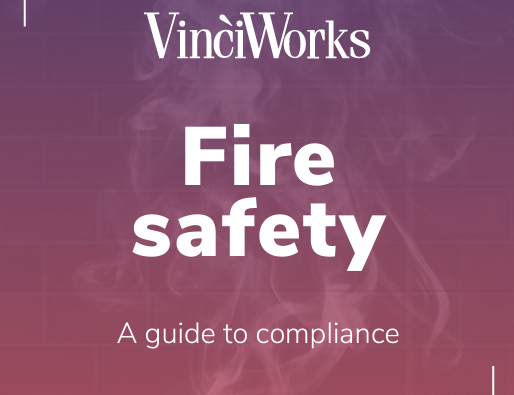Conducting a fire risk assessment is one of the most important aspects of a company fire safety policy. It’s a legal requirement to complete one for any workplace and to review it regularly.
In June 2014, care home owners Morven Healthcare Ltd were fined £45,000 for violating fire safety laws. Among other issues, inspectors found their fire risk assessment was out of date, and no emergency plan was in place. This illustrates that the consequences of ignoring these regulations can be severe, leading to financial loss or – in the worst case scenario of a fire breaking out – damage to property and even loss of life.
Carrying out a risk assessment doesn’t need to be particularly complicated and can even be done in-house, if the appropriate person has the relevant training and expertise.
What is a Fire Risk Assessment?
A fire risk assessment identifies potential fire hazards and the steps that need to be taken to minimise or eliminate those risks. For businesses of five people or above, it must be in written form. Smaller businesses don’t have to write their fire risk assessments, but they might find it helpful to do so.
It must cover several key areas:
– Identifying Fire Hazards
Consider possible sources of a fire, and what might provide the fuel for it to burn. Electrical appliances are the main cause of workplace fires so these should be a particular focus in most cases.
When deciding what might count as a fire risk, it helps to think about the fire triangle. The three ingredients needed for a fire to start are heat, fuel and oxygen. If one of these can be removed from any situation, it becomes significantly less of a fire risk.
– Identifying People at Risk
Everyone is at risk of workplace fires to some degree, but some roles and locations carry more of a risk than others.
People working alone or irregular hours may fall into this category. The risk assessment applies to any visitors, customers or service users who may reasonably be on the site as well as employees, so it is important to check if any of these groups are particularly at risk. Children and the elderly, for example, might need special attention in the risk assessment.
For those with limited mobility, they should complete an individual PEEP (Personal Emergency Evacuation Plan) with their line manager to ensure they’re able to leave the building safely.
– Evaluating and Acting on the Risks
Once all of the risks have been identified, they need to be evaluated and acted upon. How much of a risk is each one, and who would be at risk from each hazard? Is there a way of reducing each risk, or even eliminating it?
– Recording, Planning Ahead and Training
The findings of the risk assessment need to be recorded and a coherent plan put together of what to do in case of a fire.
All staff must be trained in fire safety. It’s very important that all employees should be aware of what causes fires, what they can do to minimise the risks and what to do in case of emergency.
Once written, the risk assessment should be reviewed regularly. This makes sure any new fire risks or changes in circumstances are accounted for, and that the risk assessment itself is still relevant and in-keeping with any changes in legislation.

Who Can Carry Out a Fire Risk Assessment?
The employer, owner, landlord or otherwise liable “responsible person” is legally required to provide a risk assessment for the premises they have authority over. They can either carry out this task themselves or delegate it to a “competent person”, for example a professional risk assessor, to make sure the work is carried out correctly by someone with appropriate expertise. Local fire services may be willing to provide assistance or advice but cannot write the risk assessment themselves.
It’s increasingly commonplace for lots of the day to day work of fire safety to fall to a fire warden, or fire marshal – an employee who has usually received extra fire training to spot fire hazards and can identify the relevant safety procedures and equipment. Often fire wardens do important work in making sure the fire safety rules are adhered to. Even in businesses where this is the case, however, the legal responsibility for fire safety remains with the “responsible person”.
Training Your Staff in Fire Safety
It’s a requirement that all staff, both existing and new starters, must be trained in fire safety.
Full fire drills need to be carried out at least annually, with the results recorded and kept with the emergency evacuation plan paperwork. If the fire drill isn’t as smooth as expected or there is any confusion or delay in staff getting to the meeting point, people might benefit from some refresher training.
Fire risk assessments are a legal requirement and a key factor in making sure people are safe at work. By looking for the most likely sources of fire and considering the fire triangle (oxygen, fuel and heat), it’s straightforward to create a fire risk assessment that keeps the likelihood of a workplace fire breaking out to a minimum.


